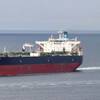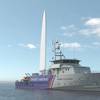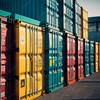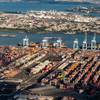Mega-Port Trends is Failing Global Traders
Peel Ports’ Commercial Director to call for radical rethink by shipping network on destination ports during address at Intermodal·Shippers and cargo owners need to take more of a role in lobbying lines to call at ports closer to the origin and destination of goods Liverpool2 to usher in new era for UK logistics
The emergence of mega gateway ports is in danger of failing the global supply chain, causing congestion, adding cost and impacting on air quality and local environments, delegates at South America’s largest multimodal logistics event will be told next week.
During a presentation in Sao Paulo on Tuesday 7 April, Patrick Walters, Commercial Director of Peel Ports, the UK’s second largest port operator, will call for a radical rethink by the supply chain to refocus on direct calls to ports closest to cargo centres as an integral part of the global supply chain network design.
Speaking before the event, Mr Walters said, “Port selection needs to be based on proximity to market. Loading or discharging cargo at ports which are remote from the initial origin or ultimate destination of cargo is costly, inefficient, risky and environmentally damaging.
“The model of mega-ports serving as gateways to extensive and increasingly remote hinterlands has to be questioned. Mega-feeders linking mega-ports do not alleviate congestion in the mega-hubs.
“Direct calls at regional ports, close to import and export centres, with transhipment occurring at transhipment ports, provide real solutions for tackling congestion and increasing opportunities for the efficient transfer of goods. Delivering ocean freight closer to destinations cuts the cost of inland transportation and removes the delay associated with the current pattern of remote shipments.
“But taking advantage of these opportunities means a shift in the current mind-set of supply chains and services, who are stubbornly rooted to a small selection of mega gateway ports. Shippers and end users need to take more of a role in lobbying lines to include calls at regional ports.”
Mr Walters will be addressing delegates at Intermodal, showcasing the £300 million investment which is being made at the Port of Liverpool to create one of Northern Europe’s most technologically advanced and modern ports. He will outline the plans for Liverpool2, defining how improvements being made there will herald a new era for logistics in UK and Ireland.
Liverpool2, located in the centre of the UK with over 35 million consumers (65% of the UK population) living within a 240km radius of the port, will open for operations in December 2015. The Port of Liverpool, until now, has been restricted to container vessels of 4,000 TEU or less. The new container terminal will target vessels of between 10-13,500 TEU but is designed to handle current 20,000 TEU vessels.
Cargo owners will, for the first time, be able to call on shipping lines to introduce direct calls of larger vessels to the heart of the United Kingdom, dubbed “the centre of gravity of the UK’s freight and logistics industry”[1]. Avoiding the need for lengthy road or rail journeys to and from ports such as Felixstowe, Southampton and London Gateway will reduce costs, carbon and congestion for cargo owners.
Liverpool2’s waterway connections to Port Salford, as a port centric logistics hub, will also position Liverpool2 as the UK's first "green logistics hub" with the potential to further reduce transportation costs, congestion and carbon footprint for businesses importing and exporting to and from the North West of England.













